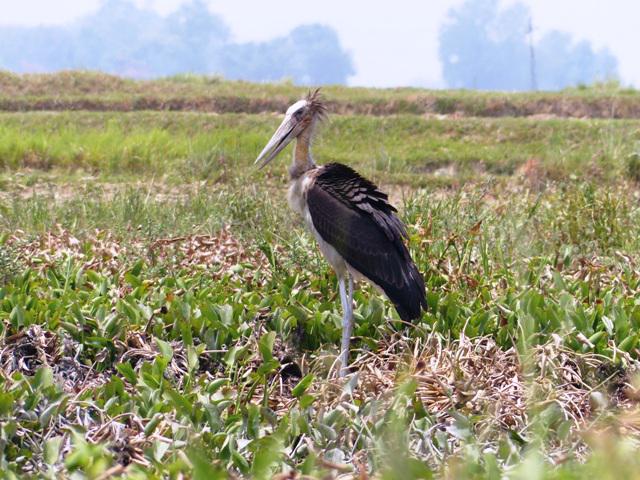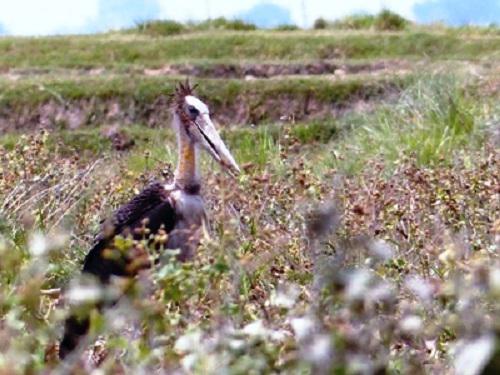Samjhana Kawan
Other projects
13 Jun 2018
Community Based Solid Waste Management for Conservation of Lesser Adjutant in Bardia, Western Nepal
This project aims to empower local women and youth for long term conservation of Globally Threatened Lesser Adjutant in Lumbini IBA, Western Nepal, through continuous ecological monitoring, capacity building trainings and awareness rising activities to mitigate their major anthropogenic threats in collaboration with local government and conservation agencies.

Lesser Adjutant Stork, at Kudabagar VDC, Lumbini.
In Nepal, the first record of Lesser Adjutant (Leptoptilos javanicus) was in the 19th century (Hodgson 1838) when it was a scarce visitor to the Kathmandu Valley (Hodgson 1829). There are no later records from the Valley. Inskipp and Inskipp (1991) found it fairly common in Chitwan National Park and the far eastern terai, and recorded it from almost the far west to the Far East, with some gaps in the west. Post-1990 it has been recorded in Sukla Phanta, Bardia, Chitwan, Parsa and Koshi Tappu protected area systems. Outside the protected areas’ system the species has been found at more localities in the west, e.g. Lumbini, Rupandehi District (Baral 1993), Khadara Phanta, Kapilvastu District (Giri 2010), and Ghodaghodi Lake, Kailali District (Sharma 2005).

Lesser Adjutant Stork foraging at Lumbini.
Globally the species has also been recorded in Bangladesh, China, India, Myanmar, Sri Lanka, and South-East Asia (BCN and DNPWC 2011).
Lesser Adjutant (Leptoptilos javanicus) is listed as Vulnerable by IUCN-2013 due to dramatic decline across its range and has been extirpated from many areas. In recent decades population is suspected to be rapidly declining as a result of a variety of threats including hunting pressure, degradation of wetland habitats, felling of colony nest trees, most seriously; persistent and unregulated harvesting of eggs and chicks from colonies. Poisoning pools to catch fish is very serious threat recorded in Nepal, which leads to incidental mortality of this species (Gyawali-2004). Rapid declines are likely to be ongoing elsewhere across the range (Birdlife-International-2014). Hence, there is urgent need of conservation measures in its rage before reaching the blink of extinction.
Mothers are the first teacher of children. Whatever they know, they teach to their offspring. And children employ what they learnt from their parents. In Nepal, most of women remain as housewife and stay at home throughout life, while men engage in employment. Youths are the pillars of future. Therefore, this project has been developed to empower local women and youth in conservation of threatened wildlife present outside the protected area system in western Nepal through monitoring, advocacy, trainings, workshops, awareness and building capacities of local people tracking the roadmaps of conservation actions proposed by Birdlife International and IUCN 2014.